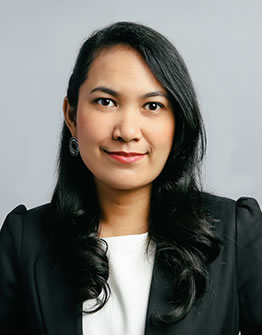
As a communications or public relations (PR) practitioner, we often work side by side with the media and journalists. Therefore, it is important that we have a good understanding of press freedom, not only in the countries where we work, but also in other parts of the world. However, do we really understand the importance of press freedom?
Many people understand press freedom as media freedom only from government intervention and pressure. While some experts see it from a broader perspective, by defining press freedom as freedom for media institutions and individuals (journalists) to present information to the public and become watchdogs against power holders. Both politically, economically and in other interests, without prohibition and intervention from inside or outside of the media institutions.
Every year, there are at least three international organizations that publish data on the development of press freedom in the world. Each Committee to Protect Journalists (CPJ) with a report on the protection of journalists whose products are the publication of information on the number of journalists who died while carrying out their profession and a list of the most vulnerable countries. Freedom House and Reporters Without Border (Reporters Sans Frontières/RSF), which assesses a broader aspect, and publishes an index of press freedom every year. The reports of these two organizations can help PR practitioners to see the development of press freedom as well as the differences in media systems in different countries.
The Freedom House Index (2017) shows that press freedom has declined to its lowest point in 13 years. Only 13% of the world’s population enjoys press freedom, while the rest live in countries with a press that is partially free (42%) or not free (45%). Freedom House also criticized political leaders who were considered to threaten press freedom in a number of countries, including Trump in the United States, Erdoğan in Turkey, Zuma in South Africa, and Duterte in the Philippines.
The RSF Index (2018) ranks Sweden and Norway as the countries with the freest media environment in the world. Meanwhile, Turkmenistan, Eritrea, and North Korea were the countries with the worst press freedom violators. Apart from giving ratings, RSF also highlighted the current growing trend of hatred towards journalists and the media, which ironically has been driven by a number of world leaders who have actually been democratically elected.
More Critical
How could we draw understanding of this kind of press freedom with our PR activities? For example, you are a Public Relations Manager in Indonesia, working for a multinational company based in China. All communication policies are decided at the head office. How will you execute communication activities in Indonesia, which has a different climate for press freedom than in China? RSF places Indonesia in 124th place, while China is in 176th position. This index states that the media in Indonesia still has more freedom than in China.
From this knowledge we can anticipate that Indonesian journalists will be more critical in their view of your company. So, before your source meets the media, there are two things that need to be confirmed. First, these sources need to have adequate media handling capabilities. This means that this person should not only needs to know what to say, but also has sufficient knowledge of how Indonesian journalists work and how to answer difficult questions.
Second, you must also be able to explain to your superiors and/or colleagues at the head office in China about the peculiarities of the media in Indonesia, such as their interests and needs regarding various issues, and the importance of having good and professional relations with them.
If viewed more broadly, press freedom can reflect the freedom of the local community in general. Decreasing press freedom within a country can be a sign of a decline in freedom of expression and a change in the country’s political direction. On the other hand, an increase in press freedom can mark a government and society that is increasingly open to differences and views. This kind of development will certainly affect society and how we communicate with them.
Verlyana (Veve) Hitipeuw
Lead Consultant, Kiroyan Partners
This article has been published in PR Indonesia magazine 40th Edition, issued on July 2018, page 53.
Download the clipping here.



